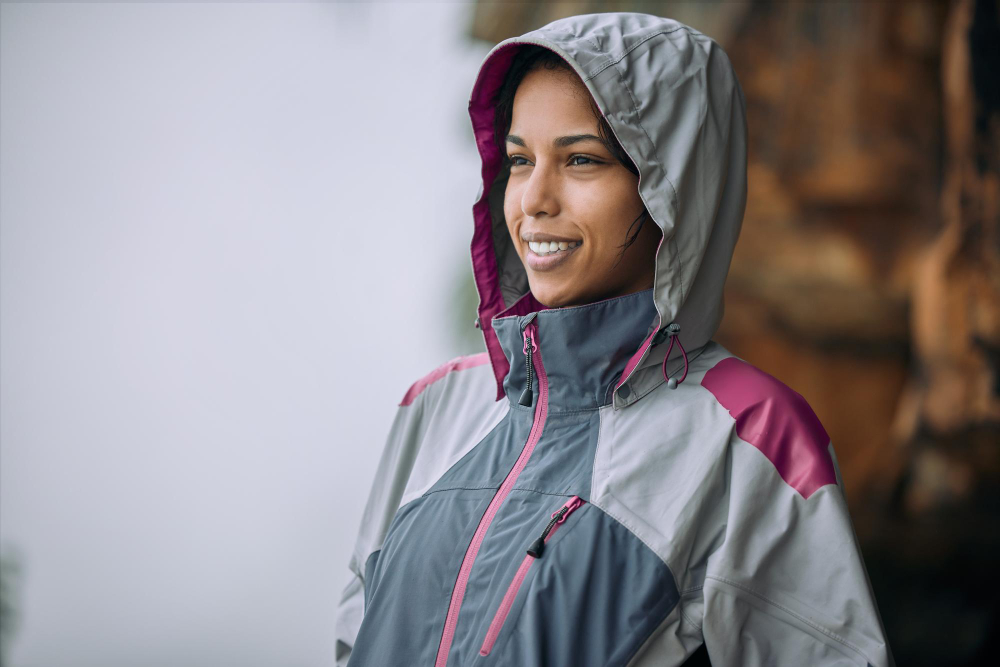Summary
- Textile finishing is an important part of fabric production. It helps improve how fabrics look and perform.
- From clothing to home decor, finishing plays a key role. Without it, many textiles wouldn’t be ready for everyday use.
- Experience the future of fashion design with Audaces360. Start your free trial now!
Every detail we see on fabrics is the result of textile finishing. Whether it’s a print, a texture, or even a special effect. To work with textiles in the best way, it’s important to understand how this process works.
This topic may seem technical at first. But don’t worry—we’ll explain everything in a clear and simple way. No matter your level of knowledge, you’ll find this guide easy to follow.
In the next sections, we’ll cover what textile finishing means and why it matters. We’ll also explore the different types of finishing processes used in the industry today.
Happy reading!
Sumário
What is textile finishing?
Textile finishing is the final step in fabric production. It prepares the fabric for use, making materials more comfortable, attractive, and useful.
Technology today enables a huge variety of textile finishing types. Some are simple, while others involve complex chemical treatments. The goal is always to improve the fabric in some way.
Without finishing, most fabrics would not be ready to wear or use. They might be rough, weak, or easily damaged. Finishing also helps fabrics last longer.
A finished fabric looks and feels better. It can add shine, softness, strength, or special effects.
Learn more: How can technology enhance the quality of textile products?
What is the purpose of textile finishing?
The main goal of textile finishing is to improve the properties of the fabric. It makes the fabric more suitable for its final use.
Some finishes make the fabric softer or shinier. Meanwhile, others protect it from shrinking or wrinkling.
Finishing can also help with improving surface quality. This means the fabric will look better and feel smoother.
The key takeaway is: different fabrics need different finishes. The purpose is always to add value and make the fabric ready for sale or use.
Most common types of textile finishing
There are many ways to finish a fabric. Finishes include different methods and effects, depending on the goal.
By fabric type
Finishes can be applied based on the type of fabric being used. Each fabric reacts differently and requires a specific approach.
Learn more: The best types of fabric for your clothing company
Finishing for woven fabrics

Woven fabrics are strong and hold their shape well. Textile finishing helps improve their texture and durability.
For example, synthetic fabric may receive heat or chemical treatment to become smoother or more resistant. This makes it better for clothing and upholstery. Finishing can also reduce fraying and improve the fabric’s hand feel.
Finishing for tubular knitted fabrics
Tubular knitted fabrics are soft and stretchy. They are a popular choice for t-shirts and casual wear.
Cotton fabric in this shape may receive softening or shrinkage control. They have the power to make clothes more comfortable and easier to wash.
It can also help the fabric hold its shape better after multiple wears.
Learn more: Learn how to adjust patterns for fabrics that shrink
By process type
Brands can choose the best textile finishing based on the steps in the manufacturing process. It allows producers to align finishing with fabric production methods.
Mechanical finishes
Mechanical finishes use machines to change the fabric. These methods do not use chemicals. Brushing, pressing, or calendering are common examples. They can make fabric softer or shinier.
Chemical finishes
Chemical finishes use substances to treat the fabric. These can change how the fabric looks or behaves.
One example of a chemical process is adding a wrinkle-free finish. This helps the fabric keep its shape.
Other chemical finishes can protect fabric from water, stains, or fire. They may also help resist odors or bacteria.
By desired features
Some finishes give the fabric a certain look or function. The goal is to meet specific customer or product needs.
Aesthetic finishes
Aesthetic finishes improve how the fabric looks or feels. These can add shine, softness, or special textures.
They are common in fashion to create unique styles and effects. They can also enhance color depth and visual appeal.
Functional finishes

Functional finishes add intelligent features to fabrics. They can make the fabric stronger or easier to clean.
Some finishes create resistance to water, stains, or fire. Others provide water repellency and crease resistance, helping clothes stay dry and wrinkle-free.
Functional finishes may also protect against UV rays or add antibacterial properties.
Learn more: Learn how to use fabric technology in your fashion designs
By durability
You can also group textile finishing by how long they last. This helps define care instructions and product use.
Permanent finishes
Permanent finishes stay on the fabric for its entire life. They do not wash out or fade easily.
They are common in high-quality or technical textiles that need long-lasting effects. These finishes require special methods to attach them firmly to the fabric.
Durable finishes
Durable finishes last for many washes, but not forever. They slowly wear off over time.
You can find them in everyday clothes, like wrinkle-resistant shirts or easy-care fabrics. For brands, it’s usually a good balance between performance and cost.
Temporary finishes
Temporary finishes only last for a few washes. They are used when the effect is not needed for long.
Some softeners and sizing agents fall into this category. They are a popular choice for fabric transport or display.
Renewable finishes
You can reapply renewable finishes after washing. They require reapplication to maintain their effect.
These finishes are common in products like water-repellent sprays or ironing aids. Consumers can reapply them at home when needed.
Learn more: Know the textile symbols and the meanings of the clothing labels
By fiber type
Finishing also depends on the type of fiber in the fabric. Each fiber reacts differently.
For example, synthetic fibers often need special heat or chemical treatments. Natural fibers may need softening or protection from shrinkage. After all, choosing the right method improves the final fabric quality.
Learn more: What is industrial quality control in the textile business and how does it work?
Ready to find the right fabric for your collection? Smart textile finishing starts with the right base. Our expert guide will help you select the perfect fabric to achieve your goals.
Download your copy now!
How does textile finishing add value to the product?
By using special finishes, the fabric becomes more useful. It can be softer, stronger, or easier to care for.
The right finish helps clothing last longer. This means fewer replacements and better customer satisfaction.
Finishing also makes the fabric more appealing. A smooth fabric surface, for example, looks cleaner and feels nicer. Remember: in fashion, looks matter. Finishes help garments stand out and match the brand’s style.
For industrial or technical fabrics, finishes give the necessary protection. They help with tasks like blocking water or reducing fire risks. All of this adds value. It turns basic fabric into something ready for use and ready to impress.
Learn more: Learn what textile processing is and how it adds value to your production
Benefits of automating the textile finishing process
Automation transforms textile finishing, driving significant improvements across the board. By streamlining processes and enhancing efficiency, machines can deliver considerable time savings and boost productivity.
This consistent, automated approach ensures uniform treatment for every fabric roll, minimizing defects and waste.
Long-term, automation translates to cost reductions through optimized energy, water, and chemical usage. Moreover, data tracking within automated systems facilitates continuous process refinement.
Ultimately, automation empowers textile finishing with enhanced quality, accelerated speed, and sustainable practices.
Learn more: Discover how to enhance productivity in the textile business chain
Achieve better textile finishing with the help of Audaces
Learn about our solutions designed to help you leverage the full potential of your textile finishing.
Audaces360
Audaces360 integrates cutting-edge digital innovations to optimize workflows in the textile and apparel industry.
It caters to companies of all sizes and types, offering the flexibility to scale with your business needs.
All solutions were carefully developed to address the specific challenges of the field. They streamline the design and production processes, saving valuable time and resources.
The platform boasts a comprehensive range of functionalities, including pattern making, marking, collection management, vector drawing, and 3D creation.
In addition, a fashion Artificial Intelligence to assist you along the way.
Discover Audaces360 and unlock a world of possibilities for fashion design and production. Explore our comprehensive suite of solutions today!
FAQ
Textile finishing is the final step in fabric production. It prepares the fabric for use, making materials more comfortable, attractive, and useful.
The main goal of textile finishing is to improve the properties of the fabric. It makes the fabric more suitable for its final use.
You can classify the most common types by fabric type, process type, desired features, durability, and fiber type.










